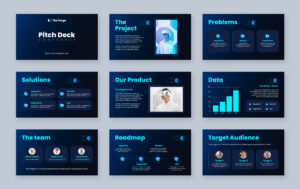The Essential Guide to Mobile App Development
In today’s digital-first world, mobile applications have become more than just convenient tools—they are strategic assets for businesses. Whether you are a startup looking to make a mark or an enterprise aiming to modernize operations, a mobile app can unlock new revenue streams, enhance customer engagement, and improve operational efficiency. With over 7 billion mobile users worldwide, the demand for apps that are intuitive, fast, and secure has never been higher.
To thrive in this competitive landscape, businesses must understand the fundamentals of mobile app development, current trends, and industry best practices. This comprehensive guide will walk you through everything you need to know in 2025—from app types and development processes to emerging technologies and common pitfalls to avoid.
What is Mobile App Development?
Mobile app development is the process of creating software applications specifically for mobile devices such as smartphones, tablets, and wearables. Unlike desktop software, mobile apps are designed to take full advantage of the hardware, sensors, and unique operating system features of mobile devices, like cameras, GPS, accelerometers, and push notifications.
A mobile app development project is multi-disciplinary and involves:
- User Experience (UX) Design: Ensuring the app is intuitive and easy to navigate.
- Frontend Development: Building the interface users interact with.
- Backend Development: Managing databases, servers, APIs, and business logic.
- Security: Implementing encryption, authentication, and secure data storage.
- Testing & Quality Assurance: Verifying functionality, usability, and performance across devices.
- Deployment & Maintenance: Publishing the app to app stores and regularly updating it for improvements.
Apps can be developed natively (for a specific platform), or cross-platform (working on multiple devices with a single codebase). Choosing the right approach is critical for performance, cost, and scalability.
Types of Mobile Apps
Understanding the different types of mobile apps is essential before starting development:
1. Native Apps
- Developed for a specific platform using platform-specific languages (Swift for iOS, Kotlin/Java for Android).
- Advantages: High performance, seamless integration with device features, smooth UX.
- Disadvantages: Higher development costs and effort if building for multiple platforms.
Example: Instagram, Spotify.
2. Hybrid Apps
- Built using web technologies (HTML, CSS, JavaScript) and wrapped in a native container using frameworks like Ionic or Cordova.
- Advantages: Faster development, cross-platform functionality.
- Disadvantages: May not be as performant as native apps, especially for graphics-heavy tasks.
Example: Twitter Lite, Untappd.
3. Progressive Web Apps (PWAs)
- Web apps that mimic native apps, offering offline functionality, push notifications, and installation on the home screen.
- Advantages: Cost-effective, no app store downloads required.
- Disadvantages: Limited access to device features compared to native apps.
Example: Starbucks PWA, Pinterest Lite.
When deciding, businesses must weigh development time, budget, performance needs, and desired device capabilities.
Why Build a Mobile App?
Mobile apps offer tangible business benefits and are increasingly essential for companies aiming to thrive in the digital age. Partnering with a mobile app development company in New York can help you leverage these benefits effectively:
1. Enhanced Customer Engagement
Apps provide direct communication channels via push notifications, in-app messages, and personalized offers. Businesses can engage users based on behavior and preferences, increasing retention rates.
2. Competitive Advantage
A mobile app can differentiate your brand by offering features your competitors lack. It also enhances brand perception, showing customers that you are modern and accessible.
3. Revenue Opportunities
Apps unlock monetization through in-app purchases, subscriptions, ads, or ecommerce integrations. Many businesses see apps as an extension of their sales and service channels.
4. Improved Accessibility
Having an app on a user’s phone ensures your services are available anytime, anywhere, increasing convenience and brand visibility.
5. Operational Efficiency
Apps can streamline internal operations, such as inventory management, workflow automation, and employee collaboration, saving time and reducing errors.
Mobile App Development Process
Developing a successful app requires following a structured development lifecycle:
Step 1: Idea & Strategy
- Identify the problem your app solves.
- Research competitors and understand target audience pain points.
- Define success metrics: downloads, engagement, revenue, etc.
Step 2: Planning & Design
- Create wireframes, prototypes, and user flows.
- Focus on user experience—apps that are intuitive and visually appealing drive higher engagement.
- Plan technical requirements, integrations, and platform choices.
Step 3: App Development
- Develop frontend UI/UX and backend infrastructure.
- Decide on native, hybrid, or cross-platform development based on performance needs and budget.
- Implement APIs, databases, and third-party integrations.
Step 4: Testing & Quality Assurance
- Conduct functional, performance, security, and usability tests across devices and OS versions.
- Beta testing with real users provides valuable feedback for refinement.
Step 5: Deployment
- Publish the app to Apple App Store and Google Play Store, adhering to guidelines.
- Prepare marketing campaigns for launch to drive downloads.
Step 6: Maintenance & Updates
- Monitor app performance, fix bugs, and release updates.
- Introduce new features based on user feedback to keep the app relevant.
Following this process ensures higher adoption rates and long-term success.
Tools & Frameworks for 2025
Choosing the right technology stack impacts development speed, scalability, and app performance. Popular tools include:
- Native Development: Xcode (iOS), Android Studio (Android)
- Cross-Platform Frameworks: Flutter, React Native, Xamarin
- Backend Tools: Firebase, AWS Amplify, Node.js
- Design & Prototyping: Figma, Sketch, Adobe XD
- Testing Tools: Appium, Espresso, XCTest
A strategic selection of tools ensures faster development without compromising quality.
Common Pitfalls in Mobile App Development
Many apps fail due to avoidable mistakes. Avoid:
- Ignoring user feedback: Early testing and feedback prevent poor adoption.
- Feature overload: Focus on core functionality first to avoid confusion.
- Neglecting security: Weak encryption or insecure APIs can compromise data.
- Poor performance optimization: Slow load times and crashes drive users away.
- Lack of marketing strategy: Even the best app requires a launch plan to gain traction.
Awareness of these pitfalls ensures a successful app launch and adoption.
Choosing the Right Mobile App Development Partner
Selecting the right company is crucial for turning an idea into a successful app. Key considerations:
- End-to-end services: Ideation, design, development, testing, deployment, and maintenance.
- Portfolio and expertise: Experience across industries and app types.
- Emerging technologies: AI, AR/VR, blockchain, 5G.
- Transparency & communication: Collaborative approach aligned with business goals.
- Focus on quality over cost: Scalability, performance, and post-launch support matter most.
A competent development partner ensures your app is innovative, reliable, and future-proof.
Emerging Trends in Mobile App Development (2025)
Keeping up with trends allows businesses to stay competitive:
- AI-Powered Apps: Personalized recommendations, chatbots, and predictive analytics.
- 5G-Enabled Experiences: Real-time streaming, AR/VR, cloud gaming, and faster performance.
- Super Apps: Multi-functional apps offering payments, messaging, ecommerce, and more.
- Voice-Enabled Interfaces: Growing adoption of voice commands and virtual assistants.
- Blockchain Integration: Enhanced security, decentralized apps, and transparent transactions.
Incorporating these trends improves user engagement, retention, and revenue potential.
Leveraging Mobile Apps for Business Growth
A mobile app is more than a tool—it is a growth engine:
- Seamless personalized user experiences
- Increased engagement and loyalty
- Streamlined operations with real-time data
- Integration with AI, AR, IoT, and blockchain
Investing in state-of-the-art mobile app development ensures your business remains competitive, innovative, and relevant in a rapidly evolving market.
Conclusion
Mobile app development in 2025 is dynamic, competitive, and technology-driven. Businesses that focus on user-centric design, continuous improvement, and emerging technologies can create apps that stand out in the crowded marketplace.
Whether your goal is to connect with customers, optimize operations, or launch a new product, adhering to best practices and staying informed on trends is essential for success.
A well-executed mobile app is more than a digital tool—it is a strategic asset that drives growth, engagement, and revenue.













